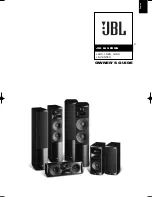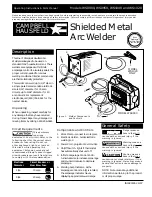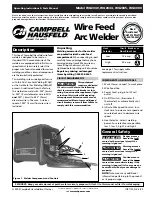
CONNECTION TIPS
SPEAKER CONNECTIONS
Separate and strip the ends
of the speaker wire as
shown. The wires supplied
with the system may already
be stripped and tinned for
easy insertion into the
speaker terminals. You may
need to separate the two
conductors further in order
to thread them through the
shelf stand or floor stand
adaptor. Speakers and elec-
tronics terminals have corre-
sponding (+) and (–) termi-
nals. Most manufacturers of
speakers and electronics,
including JBL, use red to
denote the (+) terminal and
black to denote the (–)
terminal.
The (+) lead of the speaker
wire is noted with a stripe. It
is important to connect both
speakers identically: (+) on
the speaker to (+) on the
amplifier and (–) on the
speaker to (–) on the ampli-
fier. Wiring “out of phase”
results in thin sound, weak
bass and a poor stereo
image.
With the advent of multi-
channel surround sound
systems, connecting all of
the speakers in your system
with the correct polarity
remains equally important in
order to preserve the proper
ambience and directionality
of the program material.
To connect the supplied
speaker wires to the satellite
and center speaker termi-
nals, press the red or black
plastic cap for the desired
terminal, insert the bare end
of the wire into the hole
below the cap and release
the cap.
Gently tug on the wire to
make sure that it is fully
inserted.
To use the binding-post
speaker terminals on the
subwoofer, unscrew the
colored collar until the pass-
through hole in the center
post is visible under the
collar. Insert the bare end of
the wire through this hole;
then screw the collar down
until the connection is tight.
The hole in the center of
each collar is intended for
use with banana-type con-
nectors. To comply with
European CE certification,
these holes are blocked with
plastic inserts at the point of
manufacture. To use banana-
type connectors requires the
removal of the inserts. Do not
remove these inserts if you
are using the product in an
area covered by the Euro-
pean CE certification.
Step 5 before beginning Step
7 in order to avoid damage to
the
Threaded Insert
§
.
Such damage would not be
covered under the warranty.
Step 7:
Holding the
Satellite
Speaker
¶
with both hands,
reinsert the ball portion of
the
Ball and Shaft
£
into the
Attachment Plate
¢
.
Step 8:
Hand-tighten the
Molded Nut
™
while posi-
tioning the speaker for the
desired orientation. If the
Molded Nut
™
is difficult to
tighten by hand, insert the
Metal Bar
∞
into one of the
holes in the outer edge of the
Molded Nut
™
and use the
bar as a lever. Be careful not
to cross-thread.
The swiveling ball enables
you to aim the speaker to one
side or the other, or to tilt it
up or down. Although stereo
imaging may be improved by
aiming the front speakers
toward the listening position,
especially for music selec-
tions, the surround speakers
are intended to provide a dif-
fuse, ambient sound that is
best achieved by aiming the
speakers straight out from
the wall. Aiming the surround
speakers toward the listen-
ing position may ruin the
intended effect by calling too
much attention to the infor-
mation in those channels.
Step 9:
Once the speaker’s
orientation has been final-
ized, insert the
Metal Bar
∞
into one of the holes in the
outer edge of the
Molded
Nut
™
and tighten the
Molded Nut
™
securely.
Keep the
Metal Bar
∞
in a
safe place in the event that
you decide to adjust the
speaker’s orientation in the
future.
8
































